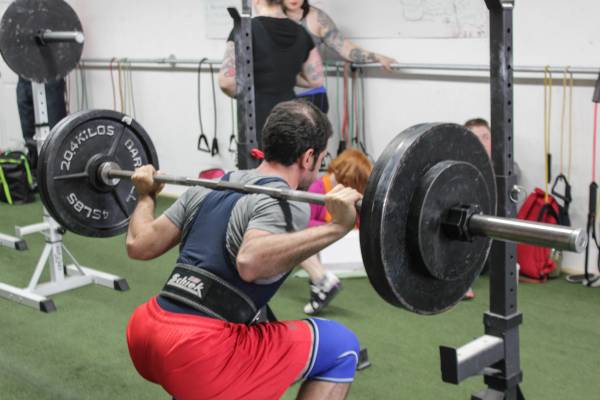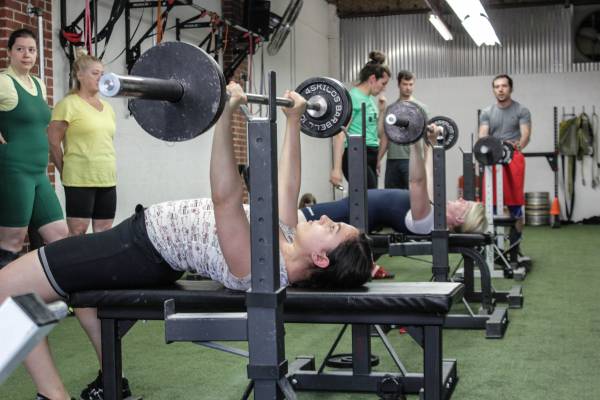As a culture, Americans are obsessed with hard work. It’s part of the American dream. You can be whatever you want and have whatever you want as long as you’re willing to work for it. We respect the individual who puts in eighty hours a week at the office, and when asked how we are, many of us answer, “Busy. So busy,” as a sort of humble brag.
The fitness industry may be the biggest perpetrator of all, with the constant glut of gym inspiration memes flooding our news feeds to tell us how no one cares about our excuses and we just need to work harder. It sounds nice, and it gives us a convenient fantasy that we like to escape to. There is, though, a pretty major problem.
It’s bullshit.
The internet is littered with images that frame fitness as life-consuming with “no excuses” for a lack of progress.
Do You Have Direction?
Hard work is a great thing and a necessary part of a productive and rewarding life in any pursuit. But hard work is nothing without proper direction. If you don’t have a good plan, no amount of effort will magically make things better. You can’t fix a broken system by just applying harder work.
I prefer simplicity in most aspects of life, and training is no exception. I’m sure you’ve been told you need to vary your workouts in order to keep progressing. It’s true, but not in the way a lot of people understand.
“Sometimes all you need are the fundamentals.”
I’ve tried a lot of things in the last fifteen years and two of the best training cycles I had were also the most boring on paper. While they were very different programs, they shared one distinct similarity – go to the gym and do the same thing every day.
The two programs I’m referring to are daily maxes and Dan John’s forty-day workout. In this article I’m going to discuss my experience doing the same damn thing every day and why you should probably give it a try.
Program 1: Daily Maxes
The approach I followed for my daily max training was reminiscent of the popular Bulgarian method with some important differences. For one thing, I’m not an Olympic lifter. For another, I don’t take steroids. There are other factors, but those are probably the two most significant.
So, what I did each day was build up to a daily max in squat, then perform some back-off sets depending on how I felt. Then, I would do the same in bench, stretch and mobilize for ten to fifteen minutes, and go home.

Training to a daily max in the squat and bench was a brutal yet rewarding training cycle.
Daily max training was both one of the most enjoyable and most brutal training cycles of my life. There was a lot about the approach I liked. I’m a thinker and frequently an over thinker. Daily max training is simple in the extreme. There’s not a lot of thinking and analysis necessary, though you do have to know yourself and be capable of some serious self-regulation.
You also need to take your recovery seriously. I know that gets said a lot, and a lot of us tell ourselves we are getting proper recovery, but be real with yourself. Do you always get your eight to nine hours of sleep? Are your macros always on point? Do you always drink enough water or do you maybe drink a bit more coffee than you should? If you’re doing a daily max program, those things are going to catch up to you a lot faster than they otherwise might.
“You also need to take your recovery seriously. I know that gets said a lot, and a lot of us tell ourselves we are getting proper recovery, but be real with yourself.”
A common concern with high-frequency, high-intensity training is risk of injury. The popular theory is that fatigue will eventually set in and bad things will happen. But other people argue that the increased frequency of training will actually reduce injury risk by improving coordination and motor control.
I can see both sides of the coin. Daily maxing is pretty much my go-to strategy if I’m not in the middle of a purpose-specific cycle, but during the four months where it was my only program I increased my squat by close to a hundred pounds and my bench by about sixty. I think a lot of those gains were not just strength and muscle, but also technical improvement. Unfortunately, that four-month cycle also ended with a herniated disk. The weird part is I’m pretty sure the injury occurred during my warm up with sub-maximal weights. My mind just wasn’t there that day.
Pros: Simple, effective, requires little thinking. Work up to a max, gauge how you’re feeling, and do a couple of back-off sets if you want. You get to do the lifts you love every day. You get to lift heavy every day.
Cons: Probably not for everyone. Overly intense for general health and fitness. Only sustainable in the long term for certain individuals.
Program 2: The 40-Day Workout
I’m a huge fan of Dan John because he takes big, complex ideas and makes them simple and accessible to everyone. I stumbled across a blog post of his detailing a program where you do the same exact lifts every day for forty days in a row. I just finished my fortieth day this past Tuesday.
I’m not going to waste too much time detailing the program here, as you can read about it straight from Dan, but I will say I was skeptical going into it. If it wasn’t Dan John, I probably would have dismissed it and in doing so missed out on a great workout.

Dan John’s 40-Day Program taught me the value of focus and simplicity in training.
The thing I noticed quickly with this program was how good I felt leaving the gym. I was used to walking out of my facility proud of my accomplishments but beaten up and a bit worse for wear. The forty-day workout had me deadlifting and benching over my bodyweight for reps multiple days in a row – but miraculously nothing hurt. My shoulders didn’t bother me. My back wasn’t an issue. After the second week, I honestly felt better than I have in years.
One of my biggest takeaways from the forty-day workout wasn’t new personal records or more muscle. It was perspective. In today’s fitness landscape, there’s a lot of pressure to leave it all on the gym floor/platform/mat/whatever. We have this ill-formed idea that if you’re not pushing through a puke-inducing workout, then you might as well be on the couch eating French fries. The forty-day workout was one of the easiest workouts I’ve done in recent years and I’m also quite confident it gave me some of the best results.
Pros: Simple and straightforward. Good mix of kettlebell and barbell work. The high frequency and relatively low intensity has a fantastic rehabilitative effect on your joints. Could theoretically be sustainable for as long as you want to do it.
Cons: Boring, some days mind-numbingly so. You may not collect personal records as quickly as you’re used to with other programs.
Back to the Basics
The fitness world has a lot to offer and, for the most part, that’s a good thing. Just try not to forget that flashier isn’t always better and more complicated rarely means more effective.
Sometimes all you need are the fundamentals. Give one of these approaches a try. You might surprise yourself with the results.
Check out these related articles:
- The 21-Day Squat Challenge
- Is It Possible to Squat Too Much?
- The 4 Undebatable Fundamentals of Training
- What’s New On Breaking Muscle Today
Photo 1 courtesy of Shutterstock.
Photos 2 and 3 courtesy of Breaking Muscle.






